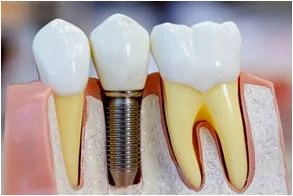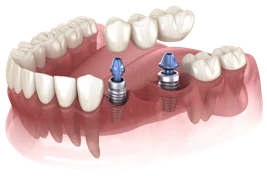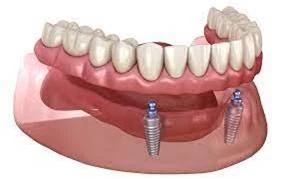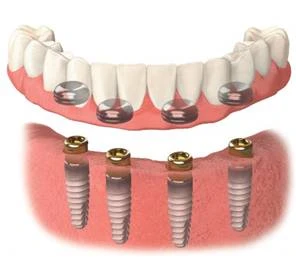Blogs
DENTAL IMPLANTS
Dental implants are surgically fixed substitutes for the roots of missing teeth embedded in the jawbone. They act as anchors for the tooth crown replacement and is also used to replace single or multiple missing teeth.
Why should you replace the missing tooth?
Reason to replace missing teeth
- Negative impact on diet, appearance and smile
- Tooth shifting or malocclusion Aged appearance
- Bone loss due to missing tooth
- Drifting and tilting of adjacent tooth
- Tooth in opposite arch supra erupt
How is an implant placed?
After proper investigation and depending on the space available an implant is surgically placed /inserted either after extraction or after healing process.
- Planning
- Main surgical procedures
- Additional surgical procedures
Depending on the type of implant placed and location of insertion there is a waiting period after which a crown is placed on the top of the implant.
For an implant to become permanently stable, the body must grow bone to the surface of the implant (osseointegration).
Types of implants
1.SINGLE TOOTH IMPLANT

2. IMPLANT SUPPORTING BRIDGE

3. IMPLANT SUPPORTED OVERDENTURE

4. IMPLANT SUPPORTED COMPLETE FIXED DENTURE (ALL ON 4/6)

Advantages Of Implants
- Implants restores proper chewing function
- No need to cap / trim normal natural tooth
- Over 90 % success rate
Is dental implant painful?
With numbed nerves, you can expect not to feel any pain during your dental implant procedure. You may feel pressure at times, but it should not cause you discomfort. For patients who have anxiety with dental procedures, oral sedation is available
Who is not a good candidate for dental implants?
Teenagers without complete jawbone growth are the sole candidates considered unsuitable for dental implants
Material of dental implant
A typical conventional implant consists of a titanium screw (resembling a tooth root) with a roughened or smooth surface. The majority of dental implants are made of commercially pure titanium, which is available in four grades.
Ceramic (zirconia-based) implants exist in one-piece (combining the screw and the abutment) or two-piece systems – the abutment being either cemented or screwed – and might lower the risk for peri‐implant diseases, but long-term data on success rates is missing
Risk and complications
- During surgery
- Injury to adjacent tooth/ soft tissue
- Excessive bleeding Pain
- First six months
- Immediate following surgery
Infection
Flap break down
Lost primary implant stability
Bleeding
- 8- 24 weeks
Failure of osseointegration (1-6%) may be due to patient factors like smoking /tobacco habits, poor health
- Long term
- Peri-mplantitis
- Wear of crown
Maintenance
- After placement, implants need to be cleaned (similar to natural teeth).
- Implants will lose bone at a rate similar to natural teeth in the mouth (e.g. if someone has periodontal disease, an implant can be affected by a similar disorder) but will otherwise last.
- The porcelain/ceramic on crowns should be expected to discolour, fracture or require repair approximately every ten years, although there is significant variation in the service life of dental crowns based on the position in the mouth, the forces being applied from opposing teeth and the restoration material.
- Where implants are used to retain a complete denture, depending on the type of attachment, connections need to be changed or refreshed every one to two years
- An oral irrigator/water flosser may also be useful for cleaning around implants
- The same kinds of techniques used for cleaning teeth are recommended for maintaining hygiene around implants, and can be manually or professionally administered
Maintenance
- Implant survival: 96.8 percent
- Crown survival: metal-ceramic: 95.4 percent; all-ceramic: 91.2 percent; cumulative rate of ceramic or acrylic veneer fracture: 4.5 percent
- Screw or abutment loosening: 12.7 percent
- Screw or abutment fracture: 0.35 percent
